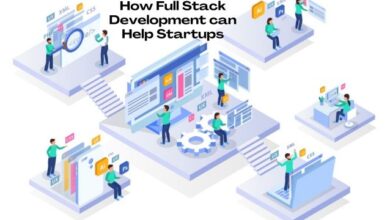What Is the Future of Robotic Process Automation?

RPA (Robotic Process Automation) is the following step in the evolution of software-as-a-service (SaaS). It’s a way for companies to reduce costs and improve productivity by implementing software that automates mundane tasks like data entry, customer service, and back-office operations. RPA can also help companies increase revenue by reducing staff needs and freeing up resources for more strategic projects.
What is RPA (Robotic Process Automation)?
Robotic process automation is software that automates business processes, replacing human workers with computers. RPA can automate various business processes, including customer service, accounting and finance, logistics and warehouse management.
RPA is one of the most innovative technologies in recent years because it’s a subset of artificial intelligence (AI). The technology uses algorithms that learn from experience to perform tasks without being programmed by humans, and they’re much faster than traditional methods!
What is the future of RPA?
The future of robotic process automation is bright, and the world has been waiting for it. In the past decade, robots have been used in manufacturing to replace repetitive tasks that humans can’t do as quickly. They’re often used for dangerous tasks like welding or drilling and simple tasks like packing boxes and loading trucks.
As technology advances, this trend will only continue, allowing businesses and organizations across the globe to increase their efficiency and productivity by automating certain processes. For example, companies that use RPA can reduce costs by eliminating employee errors and reducing human errors.
They also save time by automating repetitive tasks or processes that take up too much time or require too much attention from employees who perform them manually. In addition, RPA can help companies save money by cutting down on travel expenses when they need employees on-site but do not have enough resources available at HQ due to budget cuts or other reasons.
Based on a recent report by McKinsey & Company, RPA will grow from $4.1 billion in 2019 to $9 billion in 2023. This growth is driven largely by increased demand for customer support services and e-commerce transactions.
RPA has also been used to automate administrative tasks previously performed manually. For example, companies have used RPA tools to automate payroll processing and hiring processes, saving time and money while reducing errors.
How can businesses benefit from RPA?
There are many ways that businesses can benefit from robotic process automation.
Reduce costs
RPA automates repetitive activities, saving time and money while allowing people to concentrate on more important work. The ability to reduce the number of staff required for each task means that your company will be able to hire fewer people overall—which could mean more money in your pocket!
Increase productivity
Instead of depending solely on human judgment, robots can examine vast volumes of data using machine learning algorithms and make decisions based on their findings. This allows companies like yours to do things faster than ever without sacrificing quality or accuracy.
Improve customer satisfaction
One of the most powerful benefits of RPA is its ability to allow companies like yours to handle customer requests better while keeping them happy throughout each interaction they have with you or any other member(s) within your organization (such as sales reps).
By taking care not only of how customers feel but also what they think about what’s happening around them during these interactions–especially when compared to competitors’ experiences, you’ll find yourself gaining much higher levels of customer retention than ever before possible.
- Is a new type of computer emerging?
- How to Fix Spotify Stops Playing When Android Screen is OFF
- Best Free Mobile Games without Ads in 2022
Summary
The future of robotic process automation is bright, and people are excited to see where it takes them. In the past few years, people have seen an explosion in the number of robotics companies and the products they offer. The challenge is to keep pace with these new developments and ensure that your company has a solid strategy for using RPA and machine learning to improve its processes.



